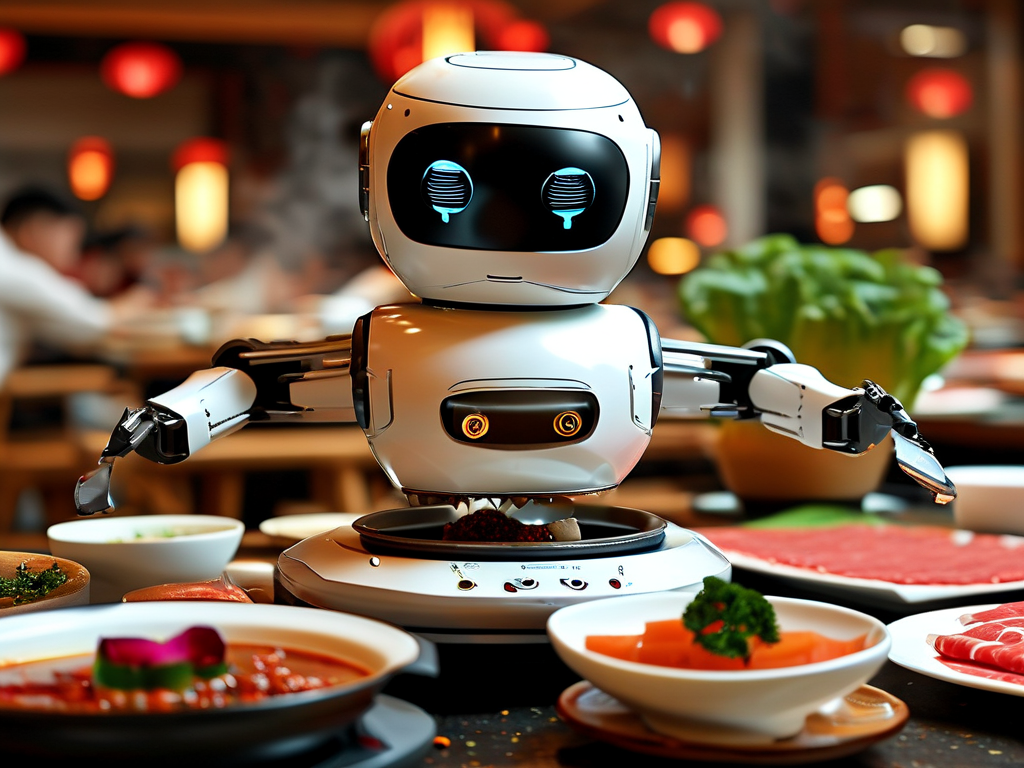The sizzling allure of hotpot dining has long been a cornerstone of communal meals, blending rich flavors with social interaction. However, the traditional model of hotpot service—reliant on manual ingredient preparation, table-side cooking, and constant staff oversight—faces challenges in efficiency and consistency. Enter hotpot robot technology, a groundbreaking fusion of culinary art and automation that is reshaping the hospitality landscape.

At its core, hotpot robot systems integrate advanced robotics, AI-driven logistics, and precision temperature control to streamline operations. These machines are equipped with multi-axis robotic arms capable of handling ingredients with surgical accuracy, while embedded sensors monitor broth temperature and adjust heat levels in real time. For instance, a leading model developed in Shenzhen utilizes 3D vision systems to identify ingredient types and portion sizes, ensuring uniform cooking times for everything from paper-thin beef slices to delicate tofu cubes.
One standout feature is the customization capability. Patrons can input preferences via touchscreen interfaces or mobile apps, specifying spice levels, cooking durations, or dietary restrictions. The robotic system then executes these instructions flawlessly, eliminating human error in order fulfillment. Anecdotal data from Shanghai’s "RoboPot" chain reveals a 40% reduction in customer complaints related to overcooked or under-seasoned dishes since adopting this technology.
From a business perspective, the operational advantages are compelling. Automated broth replenishment systems minimize waste by dispensing precise quantities of liquid based on real-time consumption metrics. Meanwhile, self-cleaning mechanisms using UV sterilization and food-grade detergents address hygiene concerns while reducing downtime between seatings. Industry analysts estimate that restaurants implementing full-scale hotpot automation see labor costs drop by 35-50% within the first year.
However, the technology isn’t without its hurdles. Initial deployment costs remain steep, with a standard hotpot robot workstation priced at $20,000-$50,000. Maintenance complexities also pose challenges—specialized technicians are required for software updates and mechanical repairs, creating new operational dependencies. Some traditional chefs argue that the robots lack the intuitive adjustments made by experienced staff, particularly when handling unconventional ingredients like fresh abalone or handmade fish balls.
Looking ahead, innovators are exploring hybrid models that combine robotic precision with human expertise. A prototype in Chengdu features a "chef assist" mode where the robot handles repetitive tasks like slicing meats and boiling broths, while staff focus on creative aspects like sauce blending and presentation. This approach has shown promise in upscale establishments where personalized service remains paramount.
As 5G connectivity and IoT integration advance, future iterations may incorporate predictive analytics. Imagine robots that anticipate ingredient shortages based on historical data or adjust flavor profiles using weather-driven demand forecasts. Such developments could elevate hotpot robotics from operational tools to strategic business assets.
While skeptics question whether machines can replicate the warmth of human service, early adopters report unexpected benefits. At a Taipei hotpot chain, customers spend 22% more time socializing as they’re freed from monitoring cooking times. The robots themselves have become conversation starters, with 68% of diners in a recent survey stating they’d return specifically for the "tech-enhanced dining experience."
In essence, hotpot robot technology isn’t about replacing tradition—it’s about augmenting it. By handling the mechanics of meal preparation, these systems allow both staff and guests to focus on what truly matters: the joy of shared meals and culinary exploration. As the technology matures, it may well set new standards for interactive dining across global food cultures.









